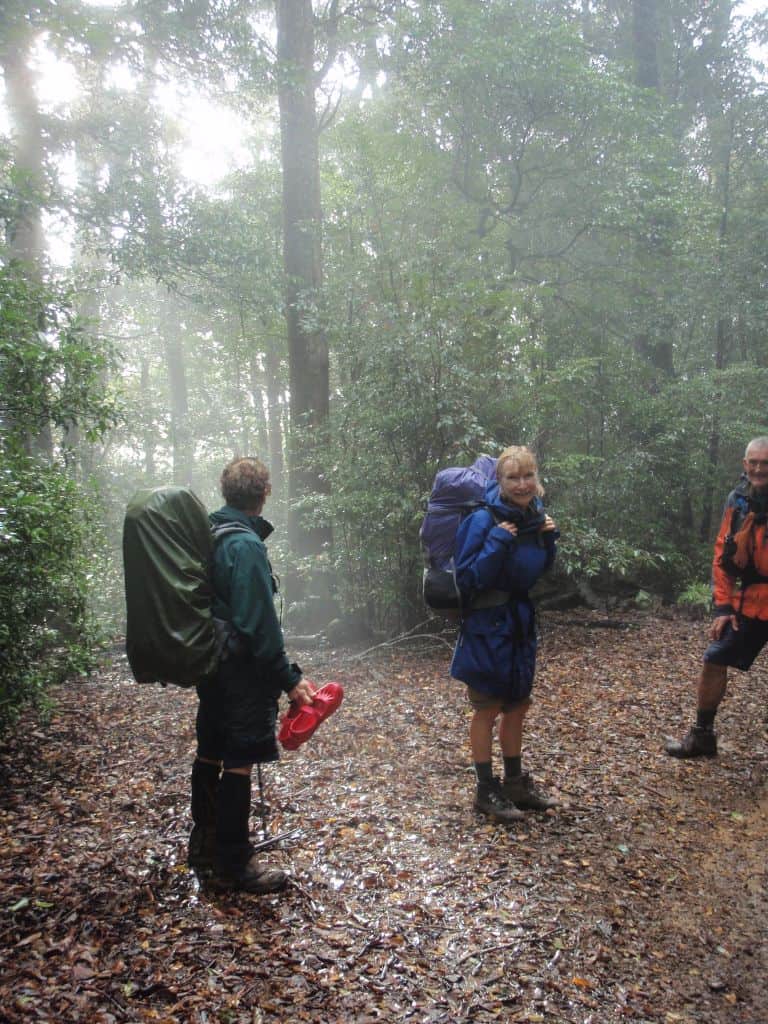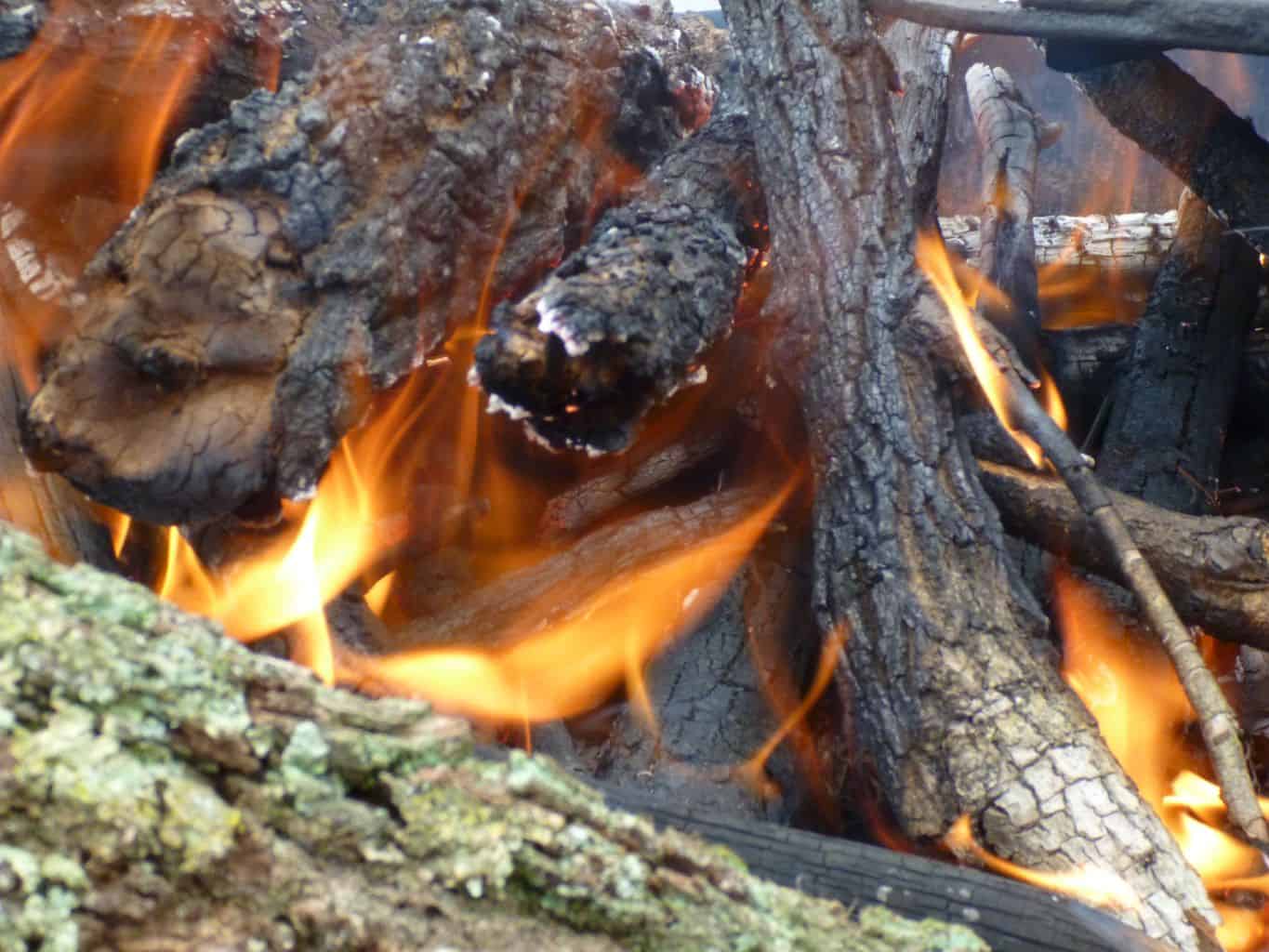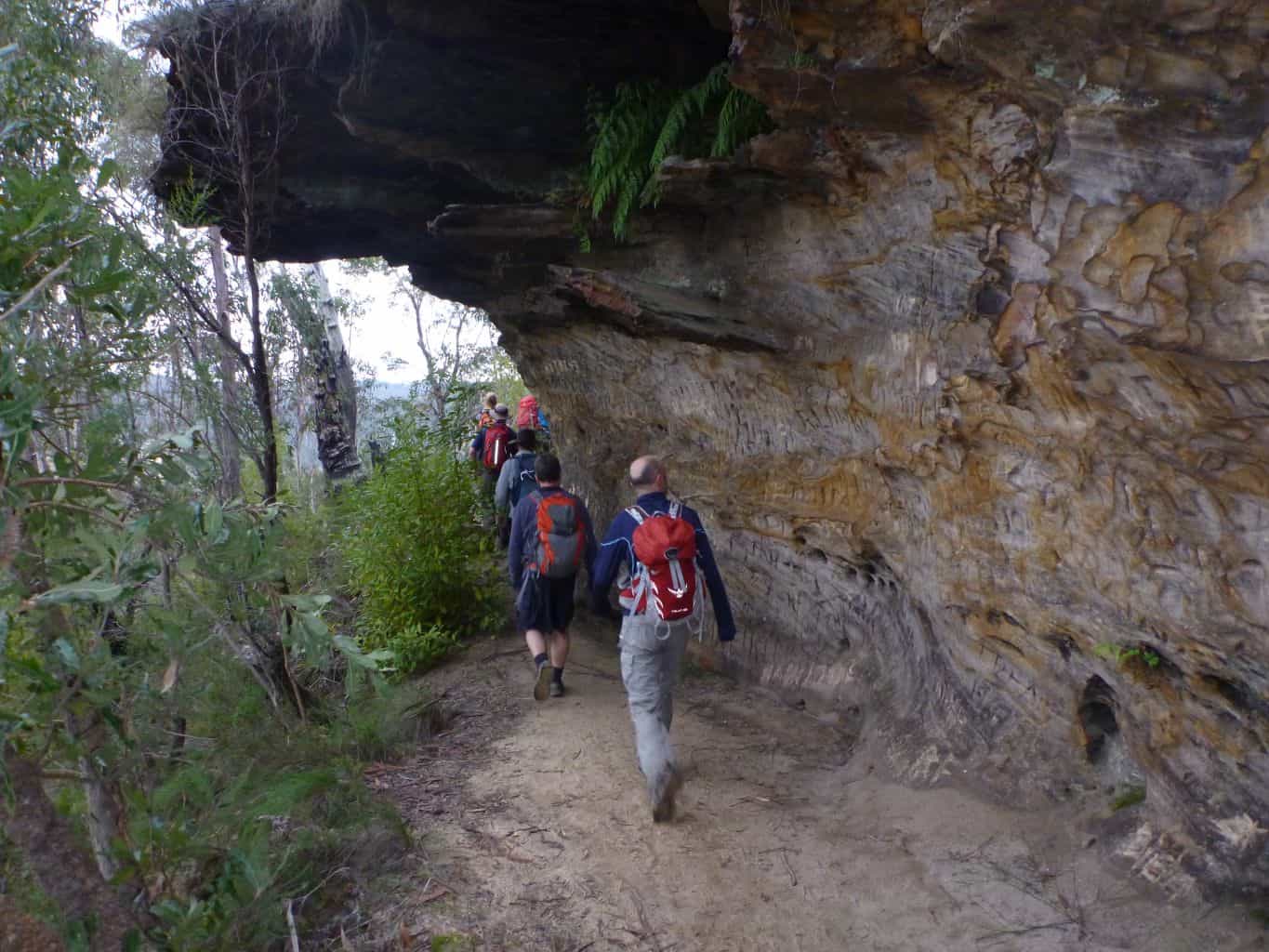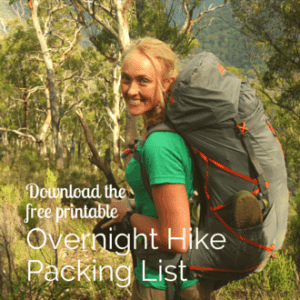The choices we make when selecting what to wear hiking, can go a long way towards an outdoors adventure being a good one, instead of one you’d prefer to forget. We all want our time in nature to be spent connected to wild places and focussing on what matters – not worrying about being too hot, too cold, too wet or having restricted movement. A few smart decisions and a little bit of planning will ensure you have the best clothes for hiking.
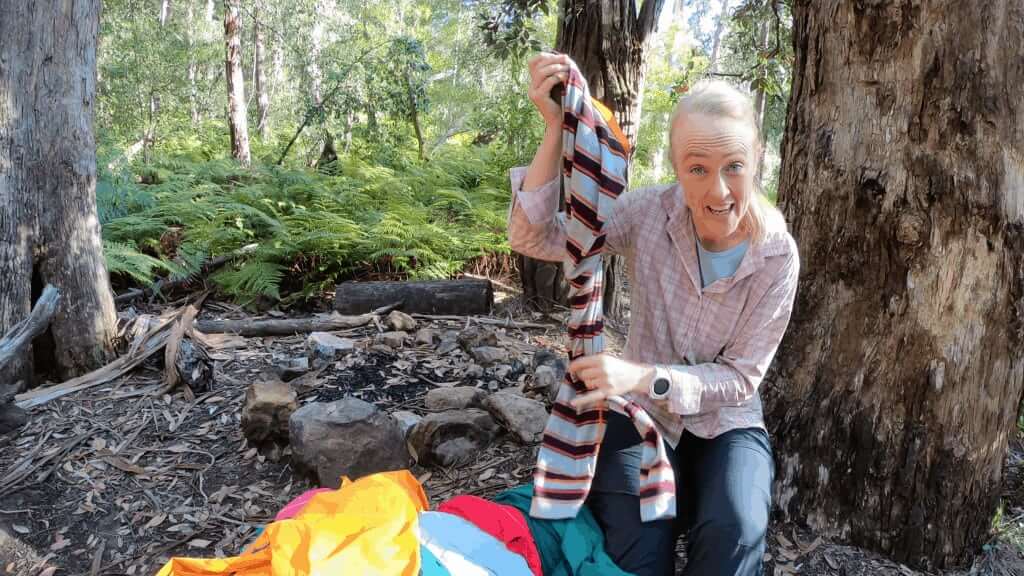
How to choose clothes for hiking
The main considerations are:
- choosing fabrics that dry quickly (called wicking). Not only drawing sweat away from your skin, but a material that dries quickly after rain or river crossings.f
- styles that protect you from the elements (eg. long sleeves for sun protection)
- materials that move with your body, with a bit of stretch – don’t be held back!
- identifying the three different layers in an outdoor clothing system
- understanding you don’t need clean/fresh clothes every day of a multiday trip
- consider the ‘packability’ of an item – how much space will it take up in your pack? (warmth to bulk ratio)
- looking for lightweight items to reduce the load on your pack and body (warmth to weight ratio)
- balancing your budget
The 3 layers of an outdoor clothing system
In this 2+ minute YouTube video, I run through the three main layers of hiking clothes and speak a little about the common fabrics, some pros and cons and demonstrate layering.
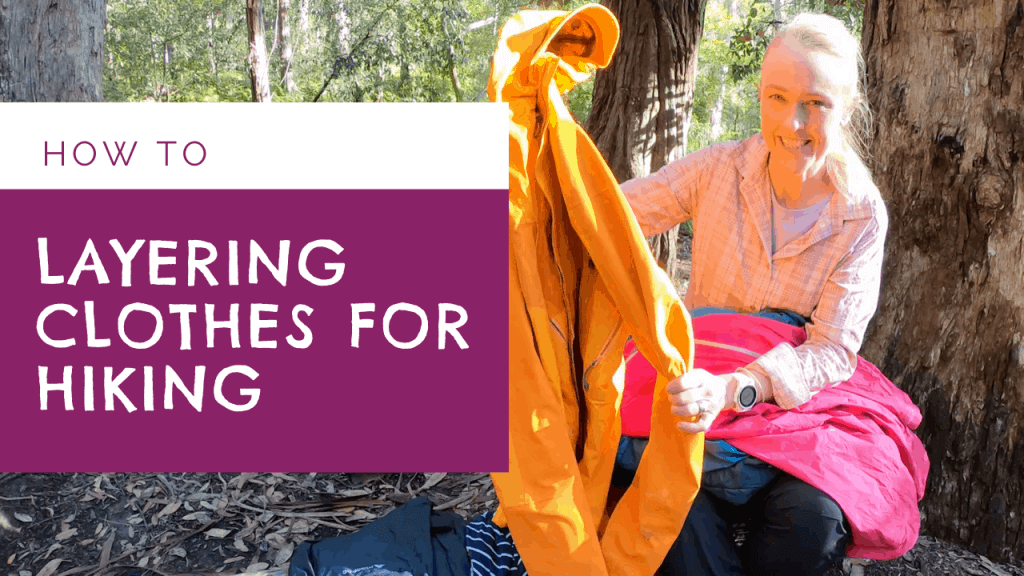
1. Base layer
Your base layer is whatever you wear directly against your skin. For this reason, it’s good to look for fabrics that are soft and comfortable to wear, have moisture-wicking qualities and (if you’re bothered by it) don’t contribute to bad BO.

Base layer fabrics
A word on merino… these days, you’re more likely to find merino blend fabrics being used in outdoor or technical gear as opposed to 100%. As tough as our woolly friends are to withstand all seasons in the middle of a paddock, merino fabric isn’t. Wool also doesn’t dry as well as a synthetic, so if you’re going to be building up a sweat or in wet weather/canyoning, a synthetic (like polypro) is going to be your hard-wearing friend.
For pants/trousers, I like the flexi-traditional-love of classic zip-off pants, so I’m wearing two options in one (pants and shorts). In recent years, with the rise in ‘active wear’, you’ll also see people (OK, mostly women!) choosing leggings as a comfy option. They’re great for comfort, just watch out for high cotton content and understand they don’t respond well to thick scrub/off-track conditions, with pulls and tears common.
Base layers also include thermals (long sleeve tops and leggings), in either merino or synthetic (eg. polypro) fabrics. It doesn’t matter what time of year, I’ve always got a set stashed at the bottom of my bag. If I’m heading out snow-camping or backcountry skiing, I’ll take two pairs – a merino set and a polypro set.
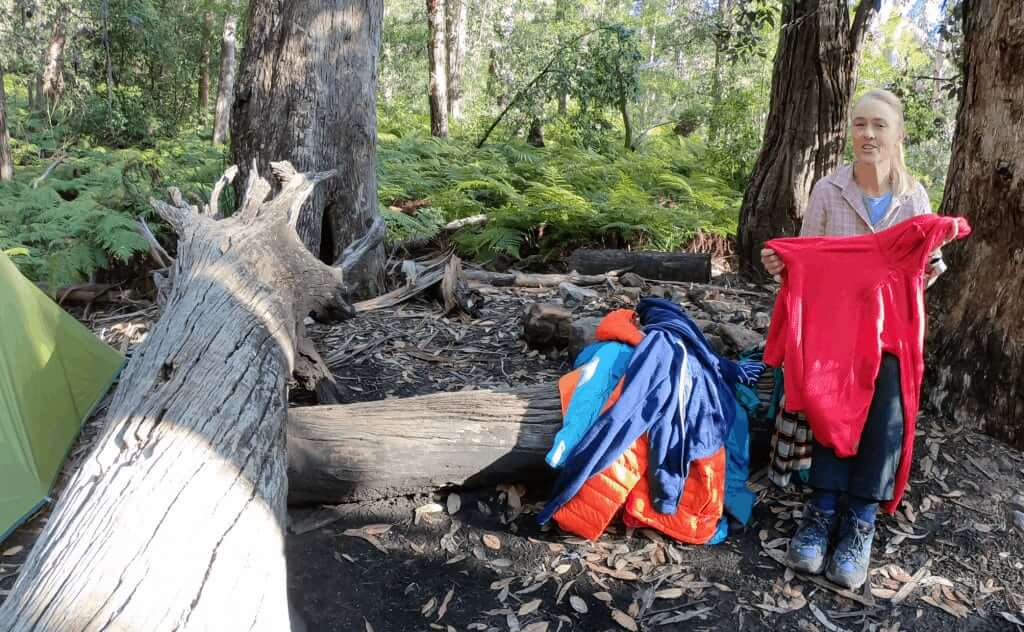
Should you wear cotton hiking?
Many experienced outdoor adventurers and guides don’t recommend cotton, especially in cooler climates. The old adage, ‘cotton kills’, comes from the ways in which cotton tends to hold moisture and therefore can contribute to hypothermia. I avoid it like the plague… or covid.
What do I wear hiking?
I choose to wear merino or synthetic blend t-shirts (long sleeve in colder weather) and sometimes a longsleeve sunshirt (with a collar) to help with sun protection. On the bottom layer, I choose zip-off bushwalking pants.
2. Mid (or warmth) layer
This layer is all about keeping you warm. The secret is trapping (and heating) air on the inside. Items like jackets, vests, jumpers/pullovers, as well as heavier gauge/thicker base layers (eg. 220 merino) are all good examples of a warmth layer.
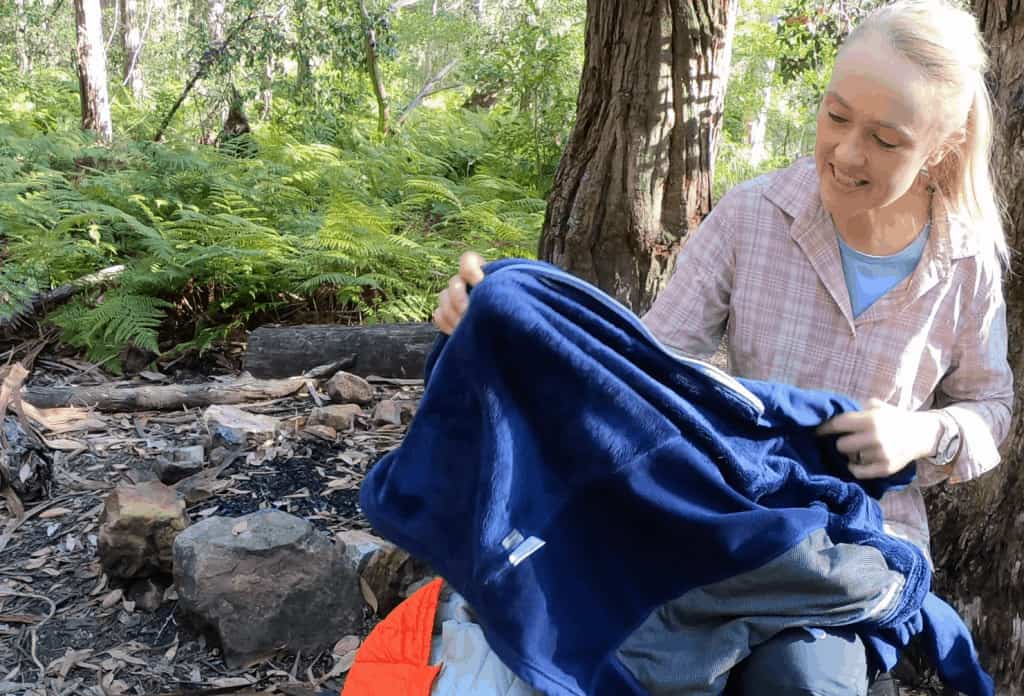
The gotcha with this layer is the bulk to warmth to price ratio. Whilst a fleece is probably the cheapest option in this layer, the warmer ones are also the bulkiest and will take up a lot of space in your pack.
Common materials you’ll find in a mid layer are:
- fleece
- synthetic waffle/grid weave pattern
- Primaloft
- Polartec
- merino
- down (goose, duck or synthetic)
- soft shell
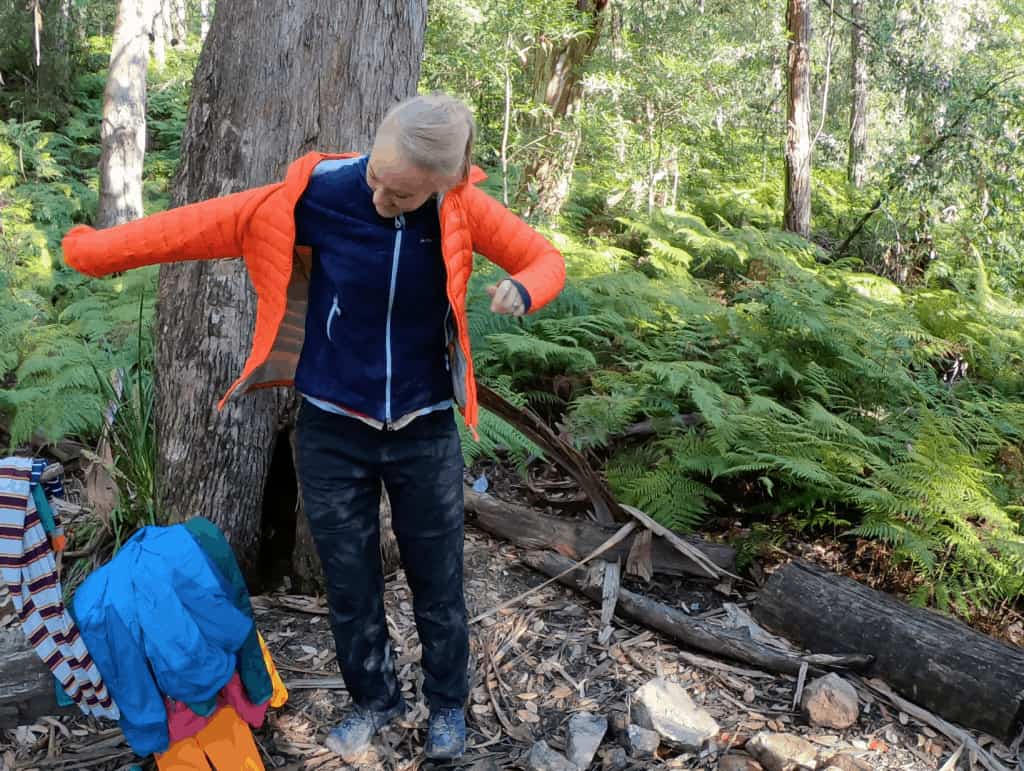
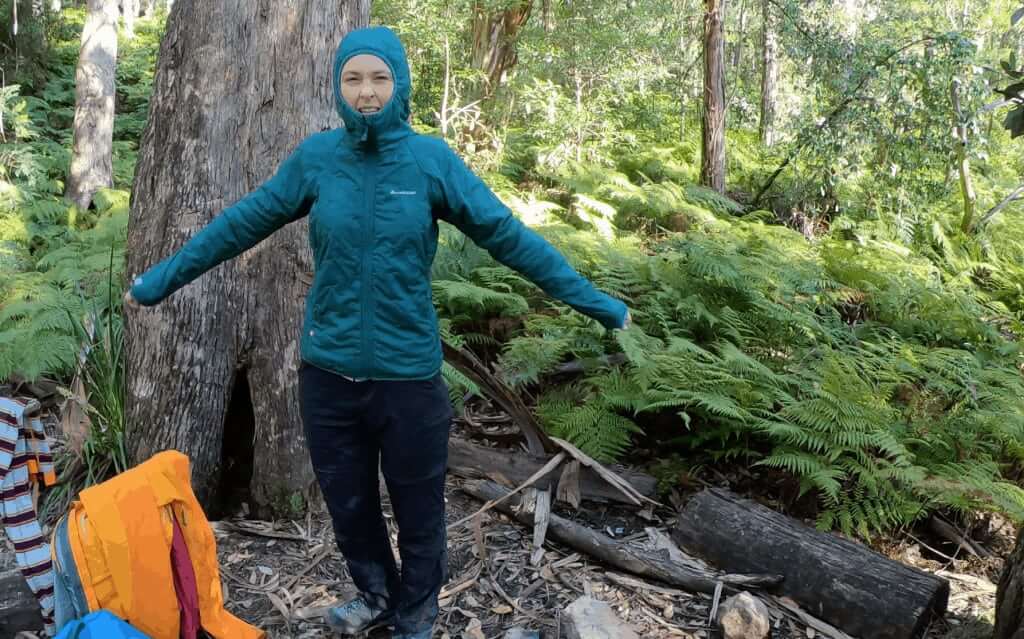
3. Shell (or outer) layer
This is your last line of defence between you and the elements. It’s designed to keep the weather off you: wind, rain, snow, sleet… all the good stuff. The most common fabric in shell jackets are:
Whilst warmth isn’t it’s main purpose, you can include this in your temperature strategy.
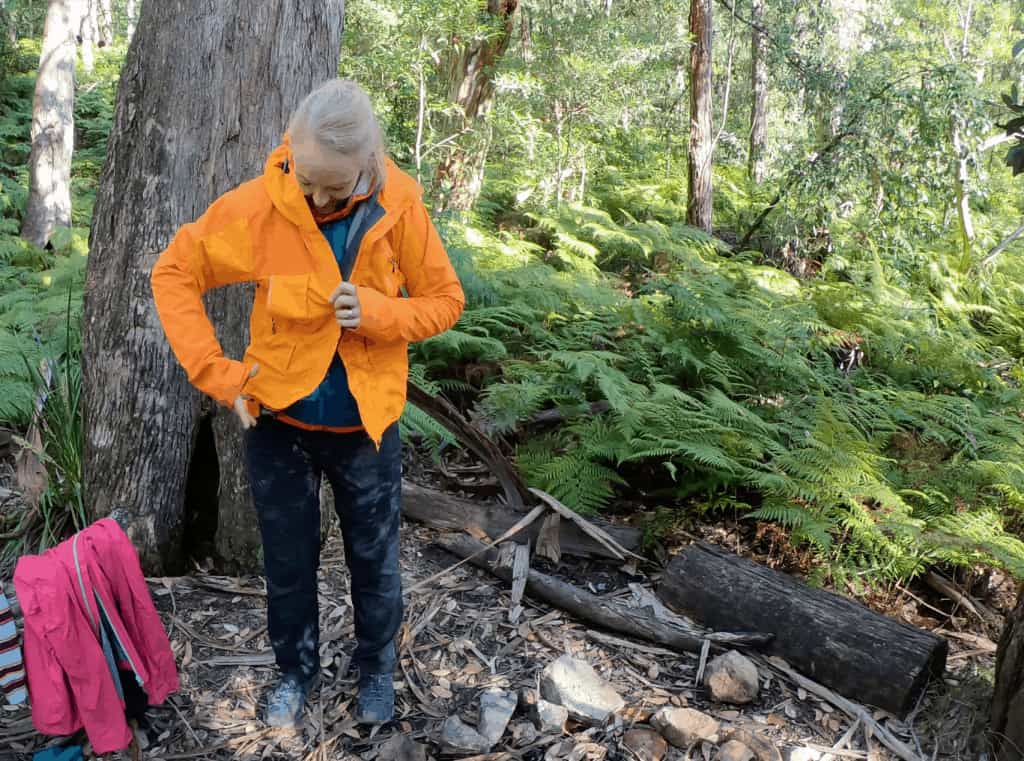
The main thing you need to decide with this layer is the waterproof rating, versus weight, versus price. A high performance jacket can be both expensive and bulky, so look out for lightweight technical jackets, with a good DWR (durable water repellent) coating.
For me, I have two rain jackets. A lightweight one that I’ll take on day walks or when there’s no bad weather forecast. Just like tents, I call this my 3 season jacket, and a longer, heavier weight jacket (4 seasons), that’s primed for the worst conditions nature can throw at me.
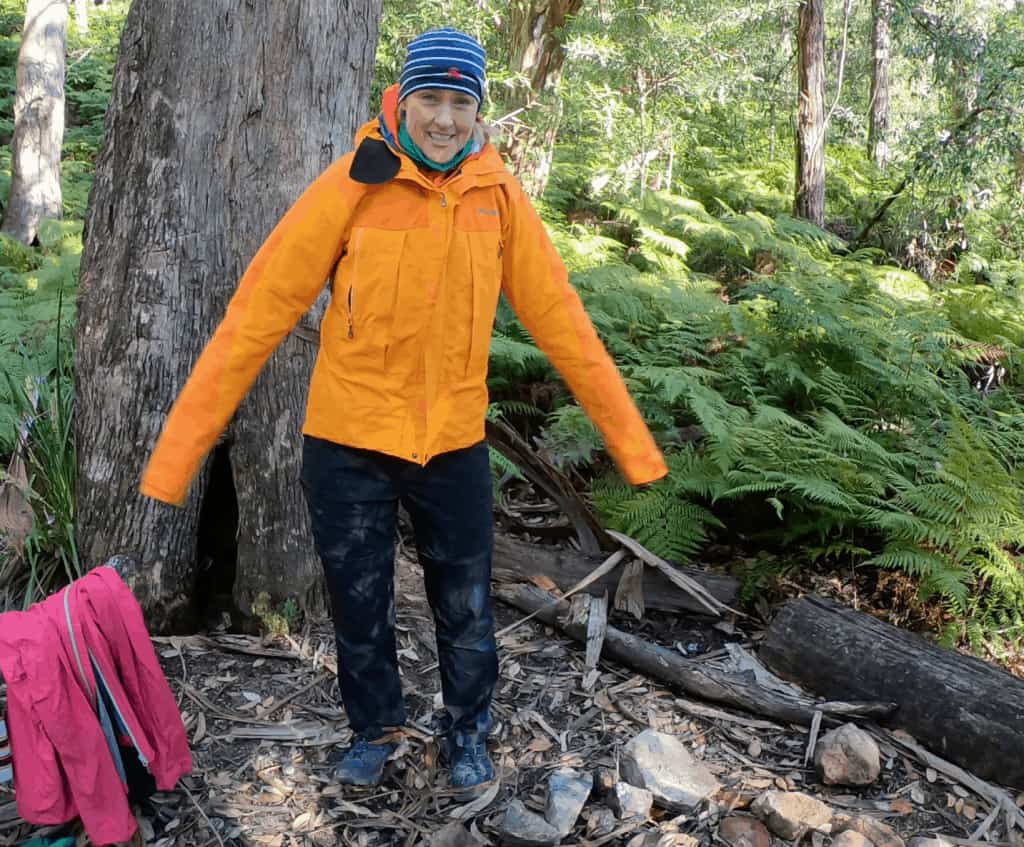
Accessories
For all the skin that’s exposed to the elements, after you’ve got your 3 layers on, accessories such as a scarf or buff, beanie or rob-a-bank balaclava and gloves have got you covered (cue: dad joke). As these bits and bobs are all about warmth, look for merino or fleece fabrics and even a waterproof shell for gloves, especially for alpine areas or in bad weather.
What’s a softshell?
This hybrid jacket is made from nylon and elastane and is usually promoted as being windproof and water-resistant… not waterproof. For this reason, I wouldn’t normally consider a softshell to be a shell or outer layer, as they can usually only handle light rain.

